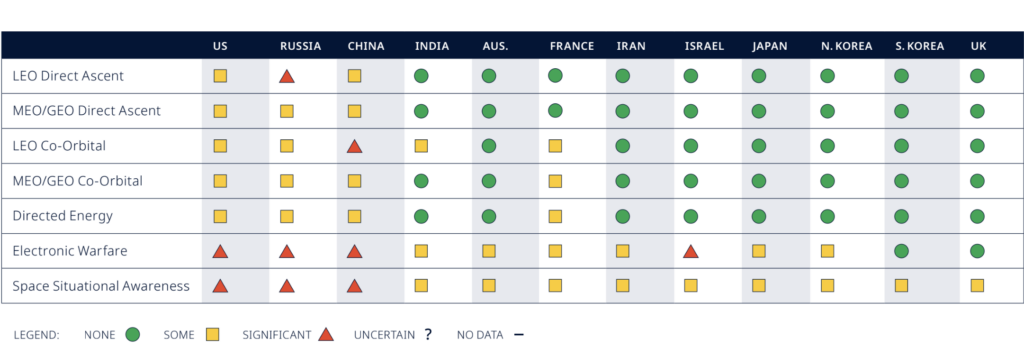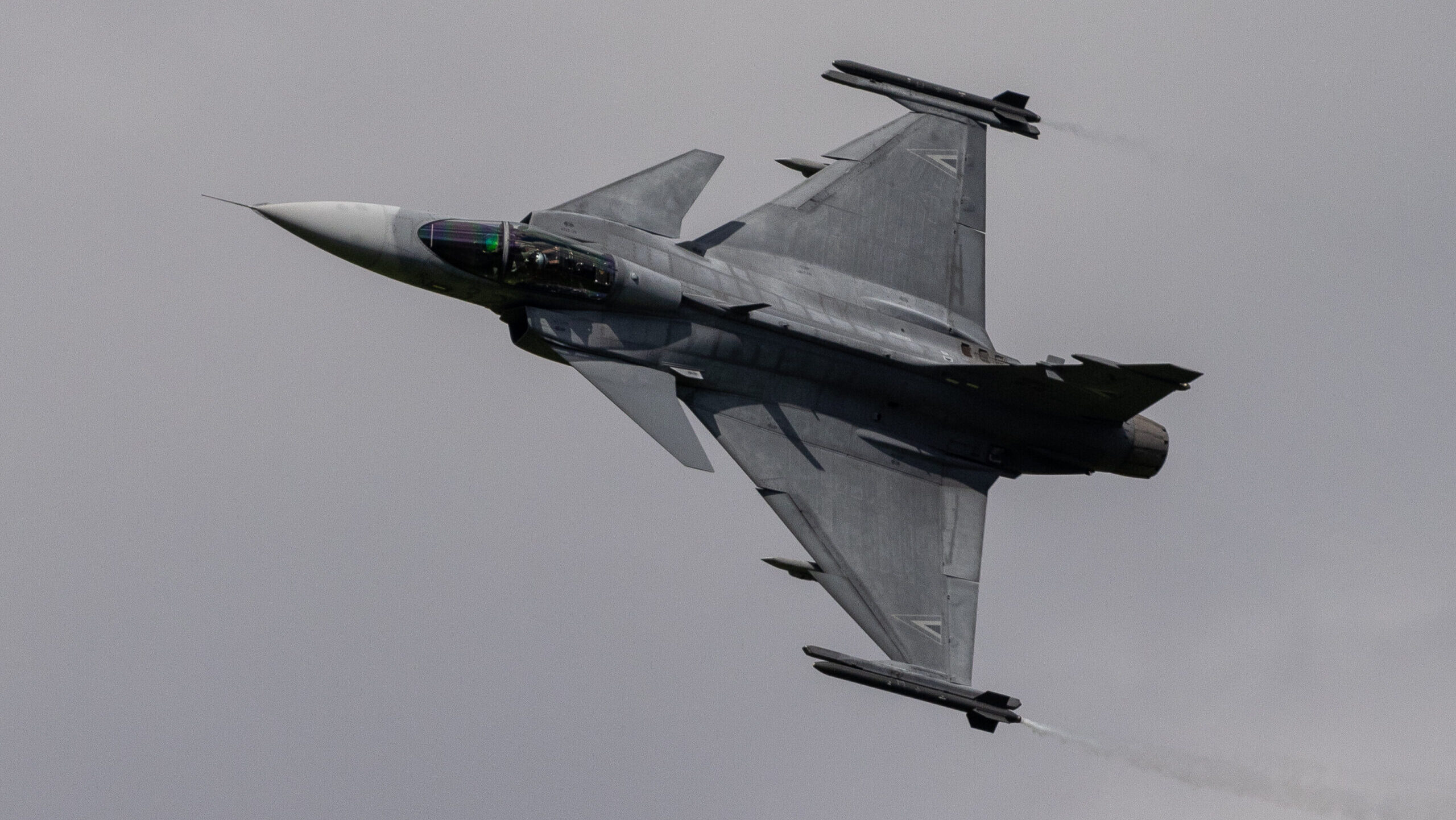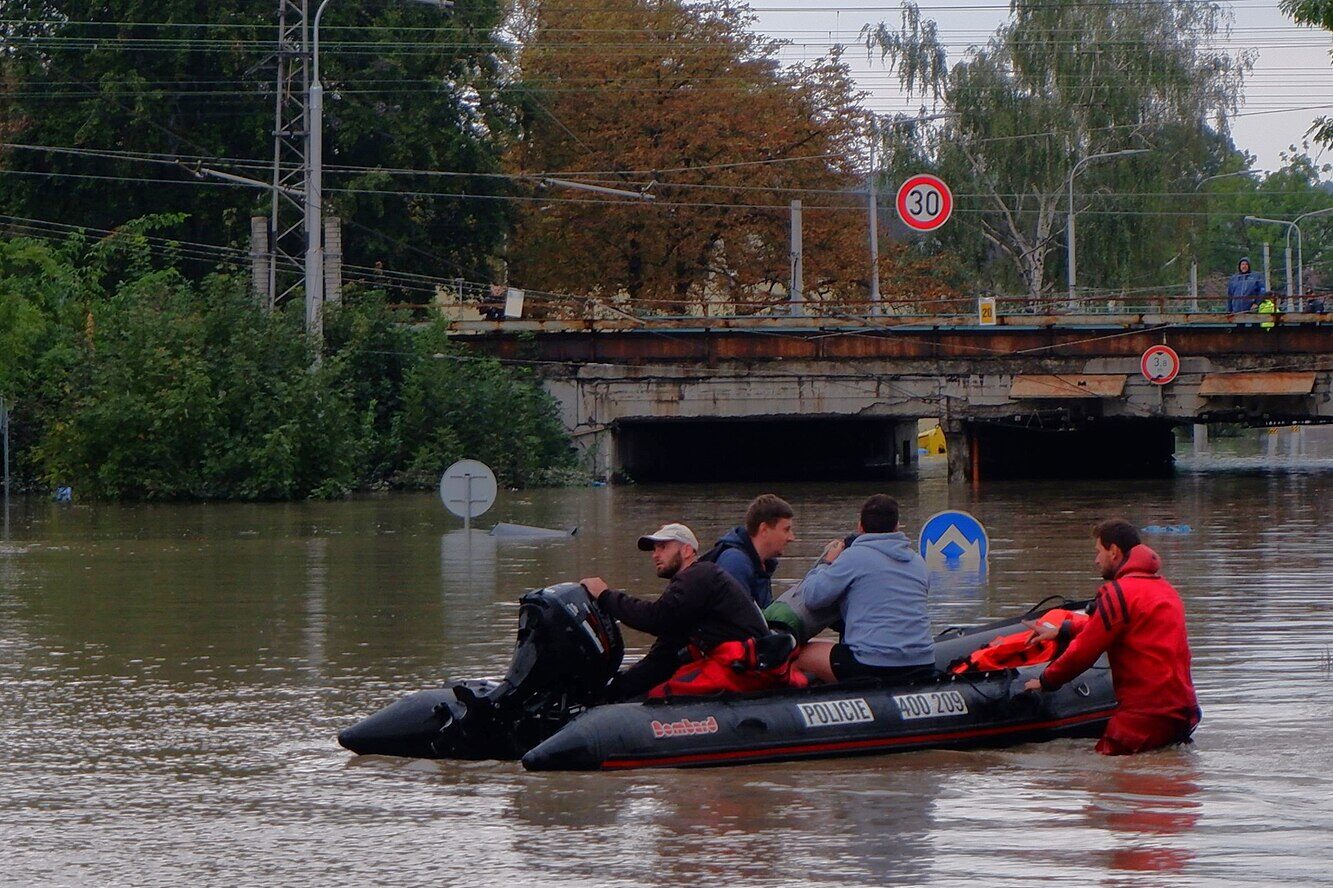Counterspace capabilities advancing around the globe: Secure World Foundation
The report finds that Russia has been increasingly successful at blocking Ukraine’s use of SpaceX’s Starlink communications constellation, citing media reports in December 2024 about a new system specifically targeting Starlink called Kalinka and developed by the Russian Center for Unmanned Systems and Technologies.


Artist’s rendering of satellites orbiting Earth. (Getty)
WASHINGTON — Perhaps the most telling indicator of how far and how fast space attack capabilities — ranging from stun to kill — have grown over the past decade is simply the size of this year’s “Global Counterspace Capabilities” report by the Secure World Foundation. The 2025 edition weighs in at a whopping 316 pages, whereas the first version published in 2018 numbered 148.
That’s the result of all of the “significant research and development of a broad range of destructive and non-destructive counterspace capabilities in multiple countries,” the report says, based on open-source evidence compiled from February 2024 to February 2025.
While the report didn’t add any new countries to the tally of the 12 cited last year that are at least researching related capabilities, it shows that China, Russia and the United States are growing ever-more entangled in an arms race to develop, test and deploy counterspace weapons based on the ground, in the air, at sea and in increasingly in space. The big three space powers over the past year have made headway on counterspace weapons using technologies ranging from radio frequency jamming to potentially even nuclear explosions (here’s looking at you, Russia).
Still, at least so far, the Secure World Foundation authors find that “only non-destructive capabilities are actively being used against satellites in current military operations.”

The Secure World Foundation’s 2025 Global Counterspace Capabilities report shows 12 countries are at least researching some technologies that could be used to harm satellite systems.
Space Jam(ming)
Specifically, the report lists a litany of incidents in terrestrial hot zones from Ukraine to the Gaza Strip involving radio frequency jamming of Global Positioning System (GPS) and communication satellite signals.
Russia has been the main culprit, with its electronic warfare operations to thwart attacks by Ukrainian drones in the ongoing war spilling over to disrupt third-country satellites — with Moscow earning a rare public rebuke last year by the International Telecommunication Union (ITU), which regulates global use of the radio frequency spectrum.
OPINION: As Baltics see spike in GPS jamming, NATO must respond
The Secure World report quotes a July 2024 statement from the ITU’s Radio Regulations Board expressing “grave concern regarding the use of signals to cause intentional harmful interference,” and noting that “extremely worrisome and unacceptable” interference to Swedish and French satellites “seemed to originate” from sources on the ground in Moscow, Kaliningrad and Pavlovka.
The report finds that Russia has been increasingly successful at blocking Ukraine’s use of SpaceX’s Starlink communications constellation over the past year, citing media reports in December 2024 about a new system specifically targeting Starlink called Kalinka and developed by the Russian Center for Unmanned Systems and Technologies. The center’s chair in (CBST), Andrei Bezrukov, touted the system to reporters as being able to locate drones, boats, and other devices linked to Starlink terminals within a range of up to 15 kilometers (less than 10 miles).
However, Russia isn’t the only country picking up its jamming game. The Secure World report points to the US Space Force’s move late last year, first reported by Defense News, to approve new satellite jammers called Remote Modular Terminals for deployment; Israel’s use of GPS jamming and spoofing in its ongoing war with Hamas; and internal People’s Liberation Army reports suggesting that China has deployed a satellite in geosynchronous orbit to test jamming capabilities in that orbital regime, which is home to many commercial and military communications satellites.
“Everyone is jamming,” Victoria Samson, director of Secure World’s Washington office and one of the report’s primary authors, told Breaking Defense on Tuesday.
Space Moves

A model of France’s YODA “patrol” satellite. (Photo: Victoria Samson)
Beyond electronic warfare, China and the United States continue to test on-orbit rendezvous and proximity operations (RPO) that could be used in a number of ways to disable or destroy target satellites, the report finds.
China’s most recent RPO foray involved five satellites — identified by Secure World as three Shiyan-24C series satellites (SY-24C 01, 02 and 03) and two Shijan series birds (SJ-6 05A and SJ-6 05B) — that US Space Force officials have called out as practicing “dogfighting” in space. The report cites a Feb. 21 “Space Threat Fact Sheet” issued by US Space Force Headquarters Space Intelligence [PDF] as saying that RPOs were conducted “from mid-March 2024 through the end of April 2024, at times separated by less than 1 km, and undertaking ‘two simultaneous proximity events at the same time’.”
The report also cites the US Space Force’s upcoming Victus Haze, Victus Surgo and Victus Salo RPO demonstrations being planned as part of its overarching quick-launch Tactically Responsive Space (TacRS) program. Victus Haze, expected to launch this fall, will involve a Rocket Lab satellite conducting maneuvers around a Jackal satellite built by True Anomaly. Victus Surgo and Victus Sol are set to launch in early 2026 under an October 2024 contract with Impulse Space, and will demonstrate how payloads prepositioned in low Earth orbit can be rapidly moved to other orbits.
The Secure World report further notes that both China and the US continue to test their respective secretive space planes, the Shenlong and the X-37B. Both space planes have released mysterious payloads into orbit that have not been registered with the United Nations as required under international law, it stresses.
France’s Space Command last September kicked off a new program designed not just to demonstrate RPO and close inspection capabilities, the report shows, but also explicitly to respond counter threatening satellites. France considers satellites that can shoot back as an “active defense” capability, Laetitia Cesari, a French space lawyer and Secure World report’s main co-author, told reporters in a pre-briefing on Tuesday.
France’s TOUTATIS (In-Orbit Test of Action Techniques against Attempted Spatial Interference) program is expected to launch two nanosatellites to low Earth orbit in 2026: LISA-1 that the report calls a “spotter” satellite for close-up observation and SPLINTER, designed to be able to autonomously undertake (relatively) rapid maneuvers to approach and take unspecified counterspace “actions.’
TOUTATIS is being developed as a companion to the French military’s YODA (Yeux en Orbite pour un Démonstrateur Agile) experimental “patrol” nanosatellite that is expected to be launched to geosynchronous orbit in 2026 or 2027, the report explains. Both programs are linked to a project known as FLAMHE to develop on-board lasers for satellites that could “neutralize unfriendly satellites without creating any debris,” the report stresses.
“France intends, by 2030, to develop EGIDE (Geodrifting Intervention and Discouragement Device), a new generation of space assets constituting the operational version of these capabilities with the objective of protecting other satellites,” it adds.
Finally, India also got into the RPO groove over the past year, the report says. “In January 2025, India successfully showcased its ability to maneuver civilian space assets in orbit, marking an important step toward developing rendezvous and docking technology for space assets.”
All told, the Secure World report finds that of the 12 countries countries covered all but two (South Korea and Britain) possess some level of capability to degrade, disable or destroy satellites and space systems. With a warning, it sums up:
“Today there are increased incentives for development, and potential use, of offensive counterspace capabilities. There are also greater potential consequences from their widespread use that could have global repercussions well beyond the military, as huge parts of the global economy and society are increasingly reliant on space applications.”





















































































































































































